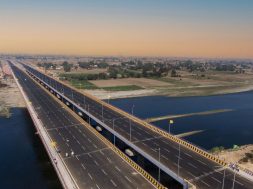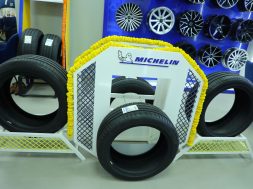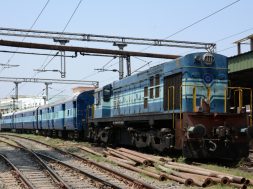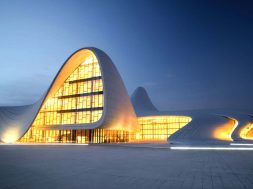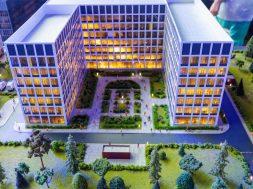Mumbai Trans-Harbour Link: A step closer to reality
Mumbai Trans-Harbour Link: A step closer to reality
“We expect to start actual construction anytime by this year end or early next year and feel confident of completing the project in 4 years,” said Ashwini Bhide, Additional Metropolitan Commissioner, MMRDA
Mumbai Trans-Harbour Link (MTHL), also known as Sewri-Nhava Sheva Trans-Harbour Link, will be the longest sea bridge in India upon completed. The six-lane, 22-km bridge will be build on the public-private partnership model and connect Sewri in South Mumbai with Chirle in Navi Mumbai. Mrs Bhide shares the latest updates and how the project is shaping up.
With the recent announcement of clearing VGF for Mumbai Trans-Harbour Link (MTHL) project, how do you see the things are shaping up?With the central government granting us the Viability Gap Funding (VGF) and almost all the clearances in hand, we do not expect any major impediments in the project. The Request for Proposals (RFP) has been sent to the five consortiums which have shown interest in constructing the project. Necessary clearances have also being taken from various agencies like the BARC and Tata Power.
What is the current status of the project? We are in the process of preparing the ground work for the project. This project is gigantic, almost five times bigger than the biggest infrastructure project that Mumbai has seen so far—the Bandra-Worli Sea Link. However, we have a team of experienced engineers who are leaving no stone unturned to make sure that once the construction begins, there are no delays. We will make sure that all necessary clearances are taken care of before the commencement of the project construction. At present, we are in talks with the Mumbai Port Trust (MbPT) from which we have to acquire land. They have given us initial clearance for the same.
Please brief us on some unique features of this project. What sort of economic prosperity you foresee for the region once the project gets accomplished?Once the project gets completed, it will definitely boost the creation of third Mumbai. The total length of the bridge is 22 km, out of which 18 km will be a sea link. Five consortiums have already shown interest in constructing the bridge which will be on DBOT basis. The consortiums are CINTRA-SOMA-SREI, Gammon-OHL Concessions-G. S. Engineering, GMR- L&T-Samsung, IRB-Hyundai, and Tata Realty and Infrastructure-Autostrade-Vinci Concessions.
The all-crucial link will expectedly carry more than 62,000 passenger cars in the year 2019 with 5 per cent annual growth. The MMRDA has also undertaken a few additional corridors to facilitate the anticipated traffic dispersal. The 17 km long Eastern Freeway which runs from Orange Gate to Ghatkopar (Chembur-Mankhurd Link Road) is one such strong option for effective dispersal of traffic. This freeway is likely to be completed in February 2013. The 4.25 km Sewri-Worli (East-West) elevated connector running from Sewri Railway Station to Dr Annie Besant Road will lead the traffic to the island city and back. The detailed project report for this elevated connector is already under process. The third option for traffic dispersal is the Chirle-NH17-Mumbai-Pune Expressway Connector. The feasibility study for this project is also underway.
What is the estimated expenditure you are looking at? How will be the project financed?Consultant ARUP-CES-KPMG Consortium has already been appointed for the project, and the MMRDA has already short-listed five consortia for the development of the project. The Rs. 9,630-crore project will be implemented on a public-private partnership basis.
As described earlier, the project will be on a DBOT (Design, Build, Operate, Transfer) model. The selected consortium will prepare a design for the project, construct it, and maintain it for a certain period of time. During this time, the consortium will charge a fixed amount of toll—decided by the Government of Maharashtra). The central government has already given a nod to pay Rs. 1,920 crore of viability gap for the project.
The project is expected to be implemented as a public-private partnership, any particular reason for choosing PPP route?The Government of India has decided to carry out major infrastructure projects on PPP or BOT model. This has many advantages. First of all, the government saves valuable public funds as a major chunk of the finances are borne by the private company which constructs the project. The company also remains responsible for running and maintaining the projects—which save valuable manpower for the government.
When are you planning to start the project? How much time will it take to become a reality?We expect to start actual construction anytime by this year end or early next year. As mentioned earlier, we want to ensure that there are no impediments once the construction begins. We feel confident of completing the project in 4 years, i.e. by 2018.How will the environmental issues be addressed?MMRDA has already received environmental clearance for the project from MoEF. During construction, there will be some inconvenience in some of the mudflats in Sewri. However, once the construction is completed, we are confident that the issues will be resolved. Take the example of the Airoli bridge which also has a lot marine lives surrounding it. Once the construction of the bridge was completed, the marine life is back to normal.
23
Cookie Consent
We use cookies to personalize your experience. By continuing to visit this website you agree to our Terms & Conditions, Privacy Policy and Cookie Policy.
